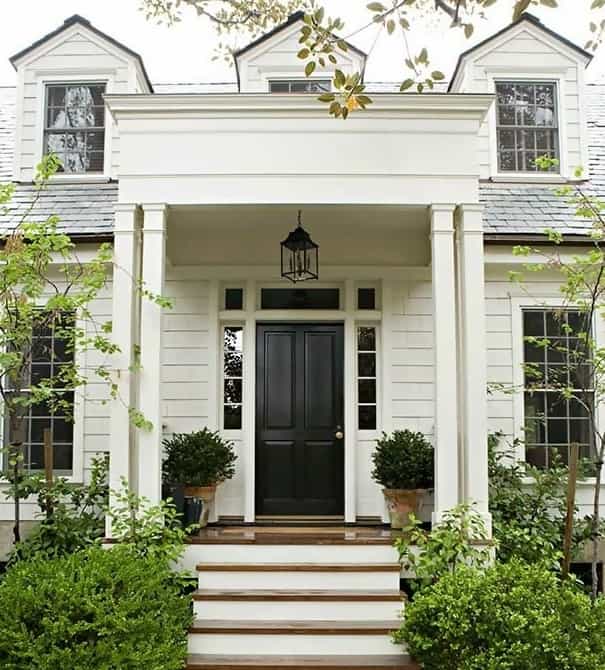Selling Your Home?
As a painting company, we are frequently asked by Realtors and homeowners to provide interior and exterior painting in preparation for selling a home. But, rarely are we asked if there are paint colors that boost home value. But there are!
Are you ready to sell? Has your Realtor recommended painting? Even if your not selling, read this article for tips regarding what colors can boost your value the most. From black and blue to white and gray, discover the colors that will create the best return on investment.
Paint Colors That Can Boost your Home’s Value
Paint Colors That Boost Home Value
Prepping your home for sale includes tedious work and some expenses on your part. This is why some lucky homeowners choose to carefully select colors during their seasonal house updates. Aside from checking the house for repairs, giving the walls a fresh coat of paint is one of the more important parts of staging a home for selling.
While some real estate professionals will advise  homeowners to use white, designers think otherwise. The overall goal of home staging is to make the house warm, inviting, fresh and neutral. White is a classic and timeless color, but many prospective buyers find white to be too stark and boring. There are also other factors to consider when choosing colors. For instance, gray may be a drab color to those living in regions where there are long winters and dark exterior colors may not be suitable for houses in warmer climates because the paint tends to get chalky.
homeowners to use white, designers think otherwise. The overall goal of home staging is to make the house warm, inviting, fresh and neutral. White is a classic and timeless color, but many prospective buyers find white to be too stark and boring. There are also other factors to consider when choosing colors. For instance, gray may be a drab color to those living in regions where there are long winters and dark exterior colors may not be suitable for houses in warmer climates because the paint tends to get chalky.
Instead of choosing to be safe with white, have a look at these colors that are tried and tested paint colors that boost home value.
Beautiful Black Front Doors
When done right, black is beautiful whether it’s used in interior and exteriors. However, for the purpose of selling your house, restrict it as an accent color.  According to Zillow, in 2018, houses with black and charcoal front doors sold $6,271 more than expected. Probably, one good reason for this is that black is a versatile color for any siding material and color and in whatever style the house is in. It goes well with light and dark neutral tones, with brick, stone or clapboard siding and even with muted and pale colors such as sage and yellow, it’s still a perfect match.
According to Zillow, in 2018, houses with black and charcoal front doors sold $6,271 more than expected. Probably, one good reason for this is that black is a versatile color for any siding material and color and in whatever style the house is in. It goes well with light and dark neutral tones, with brick, stone or clapboard siding and even with muted and pale colors such as sage and yellow, it’s still a perfect match.
Soothing Blue Colors
Calming refreshing blues are perfect for any weather and for rooms where rest and relaxation are top priorities. It’s an elegant choice for living rooms, bathroom and bedrooms, particularly when the rest of your furnishing is in light, neutral colors. In living rooms with large windows and billowy linen drapes, the effect is just dreamy.

Keep your trims and accents white when paired with this blue. Beige furnishing and maple wood also go well with this color.
In bathrooms, choose a light blue color with a gray undertone but if the effect is too gloomy, switch to a more cheerful light blue like the Bird’s Egg blue.
A light shade of blue could also be used on kitchen cabinets without taking away the charm of wood and steel materials. In Zillow’s 2017 and 2018 analysis, bathrooms in light blue colors like periwinkle, the house sold for $5,400 more than expected and the trend continues on in 2019.

With pale and lighter colors, you want to pay attention to value and chroma. Value is the lightness and darkness of a hue, while chroma refers to the strength of the color. Knowing the value and chroma of lighter colors will avoid making your walls look like chalky Easter Eggs.
Timeless White Paint
We did say that white is too plain and safe but it’s absolutely perfect if your home has a lot of mixed materials that are too beautiful to be overshadowed by paint. It also pairs well with a variety of wood tones if you’re planning to sell your wood furniture along with the house.
Choose a warm white color with yellow undertones for walls, trims, ceilings, and cabinetry. These work best for both traditional and modern homes. If you want some materials like stone or red brick to stand out, a more crisp and clean white is a good match and will make any room feel bright and airy.
The trick with white interior walls is to use different shades of white for the trims and ceilings to create contrast.

As an exterior color, white is perfect for any style of house. On Colonial, Georgian and Greek Revival houses, it pays homage to the roots of these styles by staying simple and formal. On Cape Cod houses, it plays along well with the coastal features and accents of the house.

In both warmer and colder climates, white houses either stand out against lush green landscapes or blend in magically with white snow in the winter.
If you’re targeting buyers with young children, stark white paint may not be the right color choice to attract them. White as an exterior paint may also need more maintenance than darker colors.
Gorgeous Gray Interior or Exterior Paints
They say gray is the new white and it’s varying shades, Greige or Taupe has become the designer’s new favorite neutral and for a good reason; it’s  neither boring nor vibrant, it adds just the right amount of color. Greige can be pale or dark and you must pay attention to the undertones. Too beige, and it will be too brown, and too gray, it will be too dreary. The right greige will make a room feel fresh and light.
neither boring nor vibrant, it adds just the right amount of color. Greige can be pale or dark and you must pay attention to the undertones. Too beige, and it will be too brown, and too gray, it will be too dreary. The right greige will make a room feel fresh and light.
A light shade of gray on interior walls paired with a white ceiling and trims is safe and you can stage up a gorgeous room with much more colorful accents to balance the gloom of gray.
For exterior walls, the right shade of taupe is a classic and won’t get you into trouble with your homeowner’s association since it’s a very beautiful and safe neutral. Paired with a few bright accents like yellow or teal, a taupe house can be very charming. Avoid using darker or charcoal grays for the body of the house if it is located in areas with long winters where the color could quickly become depressing. Use it as a trim or accent color instead. Houses with gray or beige facades sold for $1,526 more than white houses since most homeowners deem white for exteriors as a color that often needs too much maintenance.

When you plan to sell your house, choose colors that are easy to paint over in case the new owner has different ideas in mind. Stick to classics and avoid trends. If you must absolutely use a bold and trendy accent color, use it subtly and sparingly.

Remember that you don’t need to paint every room in the house especially if you’re on a constrained budget. Instead, put your focus on the three most important rooms in the house: the living room, the kitchen, and the bathroom.
Curb appeal is also important when trying to sell your house. If a potential buyer sees an outdated exterior, they won’t even bother coming in to check the rest of your house. Don’t forget to call in the services of color experts and realtors if you need help in staging your home for selling. They’ll be able to tell you whether your walls really need a fresh coat of paint. Chances are you won’t even need to repaint some areas if everything is in pristine condition.
